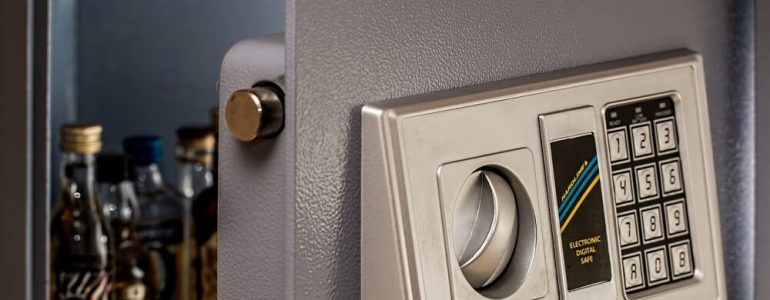So you’ve finally decided to get a home safe? That’s a great plan; not only are you on your way to providing much-needed protection for your valuables, but most insurance companies actually give better plans to people with safes.
But not matter which safe you choose, you will notice that most of the residential safe options are relatively light and easy to haul. As such, the last thing you want to do is make life easy for burglars by leaving your safe lying around.
So while buying the best home safe is important, choosing where to locate and install it is equally important. But as you’ll soon realise, there really is no one best place to put a home safe. You could pick out a spot based on security only to get a headache every day due to inconvenience.
That’s why your home safe placement decision needs to be based on more than just concealment. Typically, your choice of location should depend on the safe contents, how frequently you will be accessing it as well as the safe’s type, size, and weight.
Let’s look at the factors to consider before installing your home safe.
Key considerations and criteria for locating your home safe
1. Frequency of use
This is one of the most crucial factors to consider before deciding on where you’ll place your safe. As a rule of thumb, safes and vaults that hold items that you will be accessing more frequently should be placed where these items will be used. So if you use these things on a regular basis, then you should try to locate the safe as close to the point of use as possible. Why?
Well, because your home safe won’t really offer much protection if you don’t use it most of the time due to the inconvenience involved. For example, a home safe used to store jewellery, watches, phones, cash, and weapons will feel more at home in the master bedroom, closet, bathroom, bedside counters or study.
However, the location of a home safe becomes less critical if you don’t need to gain access to the items frequently. For example, you may not need regular access to your documents, certificates, deeds, some valuables and hobby guns. In this case, an out of the way location will do just fine. This includes spare bedrooms, garages, office, study, unused closet, or even family room.
2. Safe size, and weight
The size and weight of the safe you buy will also have a huge impact on where you place it. For large free standing home vaults, any room or closet that the space permits will be just fine. If the type is a floor or wall safe, then it should be mounted on its respective surface.
Similarly, the weight of your home safe should also be considered. Typically, safes under 500 Kg can be taken up to the second and third floors if the staircase allows it.
However, anything over 500 Kg should be kept firmly on the ground floor. Heavier safes might require special accommodation, so be sure to consult an expert to make sure you have the appropriate location.
3. Safe type
This is another crucial factor that will not only determine where you put your safe, but also conclude the final resting place for the unit. If the safe is designed to be mounted on the wall or floor, then that’s precisely what you should do to ensure security.
However, you can go an extra step further by buying internal wall and floor types. Floor types are one of the most out of the way safes currently available since they are lowered deep into the floor and fully covered with flooring or carpeting. Wall safes are installed by cutting a hole in the drywall and inconspicuously covering the safe.
Best home safe locations
While a robust and sturdy safe is often enough to deter criminals, the only uncrackable safe is one that can’t be found. Not only does hiding your safe make it tougher for burglars to find, it also increases the time required to break in. If you’re wondering what the best place to put a home safe is, try concealing it in some of these incredibly crafty locations.
i) In walls and floors
This is by far the most widely liked sites when it comes to concealing home safes. No matter which room you choose in your house, going into the floor or wall lets you hide your safe out of sight, as well as secure it so firmly that it can’t be carried off. But as you would expect, this has its benefits and disadvantages too.
Pros
- Unmatched concealment
- The ultimate form of security against carrying off
Cons
- Requires the most demanding initial installation process
ii) Behind bookshelves
If you have a study or library in your home, then you just found a great place to stash valuables. Most criminals will not take the time to rifle through an entire book collection even if you were using a few false books to hide some valuables. However, getting a backless bookshelf or customizing yours gives you a whole new way to conceal a safe.
Pros
- Libraries seem to be the last place burglars visit
- Stacks of books make it hard to identify if there’s anything behind there
Cons
- Getting to your safe will require you to move some books every time
iii) Kitchen
That’s right, turns out that the last place you would expect to find a safe is actually the best place to conceal it. With a plethora of cupboards, compartments, counters and hiding spots, the kitchen is a great option for hiding a home safe. The only time burglars go to the kitchen is when they want to raid your fridge. So even if they suspect that the safe could be in the kitchen, they would rather raid the living room and bedrooms first.
Pros
- Least likely room for burglary
- Plenty of potentially great hiding spots even under the sink
Cons
- Putting a safe in the kitchen puts it at risk of fire or water damage
Parting shot
There you have it folks, all the key considerations you need to make before settling on a location to install your home safe. Before I go, I almost forgot to mention a few more criteria to watch out for. Apart from being able to handle the weight, your selected location of choice also has to be free from any wiring or piping. See, many areas in the floor or walls tend to have some electrical wiring, heating, or water piping. So make sure that the area you are drilling or digging out is absolutely free from all these hazards.








Hello Sam, You guest it I have an issue with a safe small digital with a key. The digital panel was so cheap it would stay on after a while of use. So i cut the wire an removed the panel. Now I do have a key so i thought no problem. So i had to put my safe in to storage due to being homeless for a year a half. Now that I have a place to live ( Bless Jesus) I put the Kenyon the safe started to turn the key, As I began to turn the key it got harder and harder to turn. So now it won’t turn anylonger. . We’re do I go from here? please help My land deed to 8 acres of land that I have recently sold is in this safe. I can’t get paid until I can give the man his deed. HELP !!!!!!!!! Urgent!!! May 7 2021 3:42pm